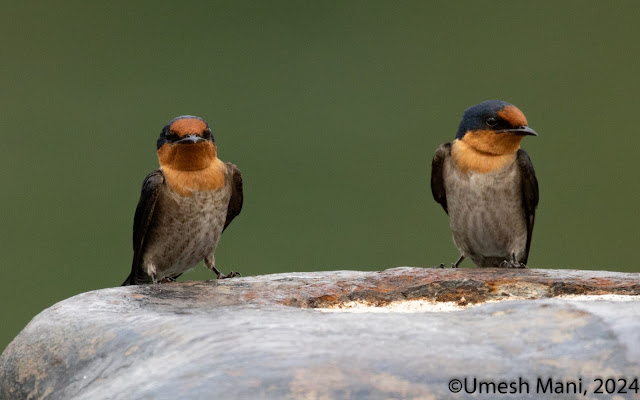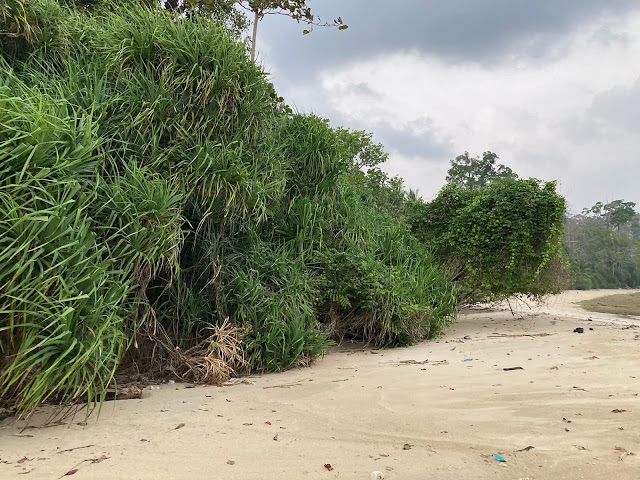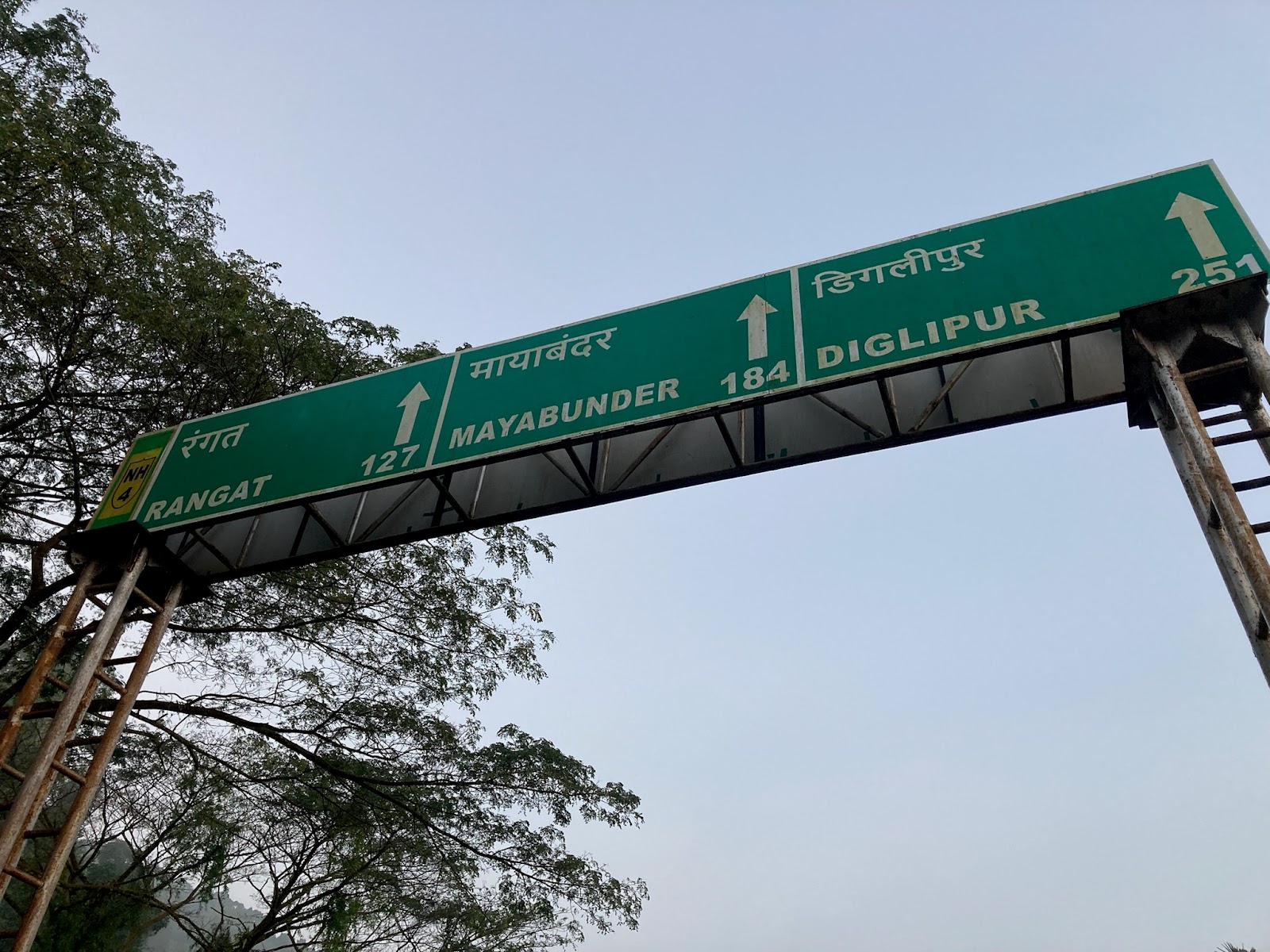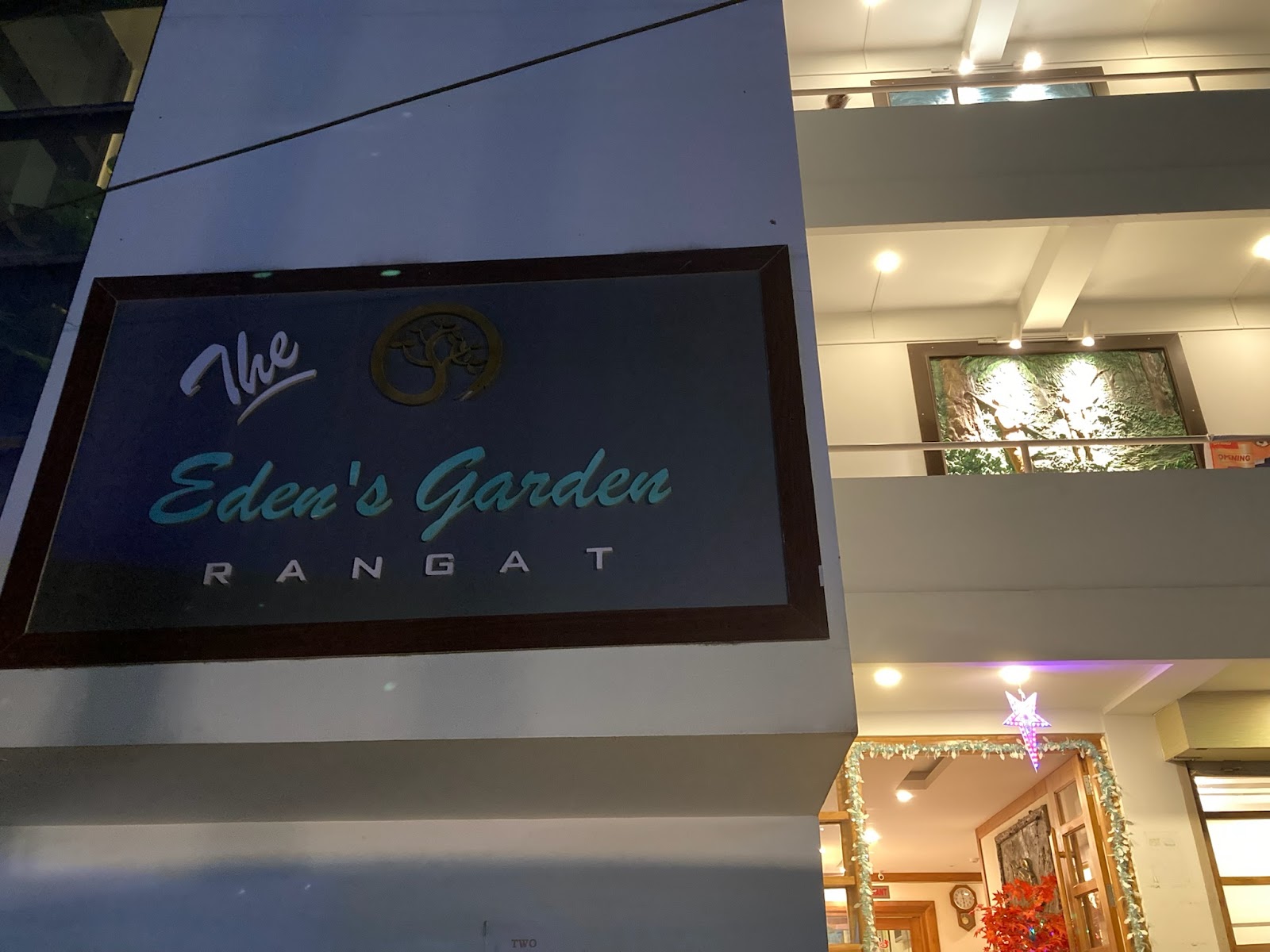Day 3 Andaman - The road to Rangat
Feb 12th 2024
Continued from here.
In the debriefing, it was stressed to us that we had to get to the head of the convoy, or else the cars wouldn't make it quickly on the ferry across and then that would delay us.
 |
| Anyways, we reached Jirkatang - the convoy starting point at 530 instead of 5, and so we didn’t make it to the head of the convoy and we were waaaay back |
 |
| Dawn was breaking, and I was dazed at the long and orderly line of cars, lined up on the left of the road. |
 |
| The Islander is more orderly than the Mainlander for sure. There was no traffic jam, no honking. |
 |
| Drivers were going off to submit the necessary papers - we had to fill a form with the usual bureaucratic details of where we were coming from, whether we had murdered anybody etc. |
Of course our gang gravitated to a lady selling idlies - she was a feisty no-nonsense sort - must have seen people like us by the dozens. She was most affronted that we were not demanding her "poo-poley" (flower-like) idlies, but were falling on all the fried food instead. I desisted and refrained from putting anything into my stomach - a very wise decision in hindsight.
Travelling through the Jarawa reserve and the convoys
From: The damned road of Andamans
Every morning at 6 am, the gates to the Jarawa Tribal Reserve, located in the Middle Straits of the Andamans, are thrown open with a loud pre-recorded voice reading out instructions of social conduct to be followed inside the forests. Following this, a convoy of cars and buses cross into the forests from the hamlet of Jirkatang, the last housing settlement towards Baratang Island, a less popular attraction for tourists. En route the convoy crosses another that approaches Jirkatang from Baratang. Throughout the day, six more convoys enter the reservation from either side at three hour intervals.
In the beginning of the 18th century, the Jarawas inhabited the South Andamans while being at war with the Aka-Bea-da tribe. The Jangils, who bore some relation to the Jarawa, were situated further south on Rutland Island. The first colonisers of the land, the British East India Company, built their townships around Chatham and Ross Island, cleared the forests starting with southeast Andamans and managed to push the tribal demographic towards the north. They frequently attempted to make contact and engaged in the practice of 'gift-giving' with Jarawas, efforts which were sometimes reciprocated with hostility. As the number of colonial villages and forestry expeditions increased, small battles between the tribe and the police or bandits became common. While the other two tribes perished into extinction, the Jarawas survived the exodus. In 1957, their habitation area from the southwestern forests of Constance Bay through the Middle Straits into the Middle Andamans and the marina around it was declared a tribal reserve under the Andaman and Nicobar (Protection of Aboriginal Tribes) Regulation Act, 1956.
The settlers who came to the North and Middle Andamans with the establishment of penal colonies and later the refugees of Partition lived in a mortal fear of the sea. The development of the Andaman Trunk Road through the tribal reserve was sanctioned in the early 1970s as a result of their nautical discomfort. The Jarawas have resisted the building of the road since then. In fact, the convoy system was initiated as a way to protect the Public Works Department workers constructing the road from arrows shot by the natives. Existing folklores even account for a number of Jarawa deaths as a result of electric wires laid down by the state. Out of fear, no official complaint of such deaths were ever made, but the tribal elders have recorded them in their oral history. The construction of the road was completed two decades later while the convoys continued to protect the intruding travellers.
Today, the upkeep of this road faces no opposition from the Jarawas. In a reversal of history, the convoy system is now in place to prevent tourist intrusion into tribal lives. The police bikes that tail the convoys keep all passengers from straying off the road and establishing any contact with the tribe.
(The SC has asked for the road to be closed, then the other Islanders appealed, and it seems the decision was reversed.)
For the next couple of hours, we drove through a super smooth road (for the most part), with our cameras tucked away (no photography allowed, as also no stopping, speeding, honking), looking at the green forests, the valleys dropping off behind the tree cover, the streams glinting in the sun, flashes in between trees. I tried to consign to memory the green, the clean streams, the ravines. Every now and then there would be tree logging - a cell tower was being installed.
Conversation ebbed and flowed in between napping - the quiet was causing everyone to drop off, nodding heads all around. Our driver told us about how the Jarawas received rice and sugar from the government, how they get health checks, how many know and understand Hindi now. There is a legendary story of a little Jarawa boy breaking a bone and being healed in one of the district hospital, making friends, learning to communicate with the settlers, and being the bridge that reduced hostilities between the Jarawas and the settlers.
Middle Straits and Baratang
 |
Around 8am and we were at the other side of the reserve, at Middle Strait jetty. The original plan was to board the ferries in the cars and go off to the other side - Baratang. |
 |
| Middle Strait - from the ferry |
A short ride later we were at Baratang and walked in to the only eating establishment of repute there.
The little place delivered dosais and other such fast food, shared tables, no loitering, eat and move. Once again there was a Tamil-speaking "boss" who kept the flow. I had one plate dosai - there were two - I think Gasper was more adventurous - he had parottas and puris as well.
And now, we waited for our cars to come over in the ferry. We waited. I watched in fascination as a bus disembarked. (The buses had a roller attached behind the end of their vehicles so their bottoms wouldn't get scraped off every time they came off the ferry.)
We watched the Pacific Swallows.
 |
| This pair gave us a lot of joy. They would come sit on the jetty, take off at the slightest disturbance, swoop over the water, return. Repeat. so fast were they, I could not take a video. |
Others watched us watching the swallows. Doggies slept. Tourists came and went. And still we waited.
It was 1130 or so, by the time our cars came across, after the buses and the oil tankers.
We are all a bit tired and bored by now - and Jabili moved to the front to supposedly show us birding wonders - which meant that Sekar went back to the third row, and the import of this hit us later.
NH4 rock and roll, bump and groan.
"Ab road thoda karaab hoga", said our driver after we crossed Nilambur, which was the understatement of the year for sure. There was no road!! No road, only holes. What bird, what sights, we each tried to hold onto something to prevent being tossed around like potatoes - the Mahindra Xylo's soft suspension adding to the feeling of being on a choppy sea rather than on terra firma.
When we spoke we warbled into gamakams that would have made any Carnatic singer proud, as our vocal chords followed the laws of inertia within our throats.
Do listen to the interesting conversations in the car.
And then suddenly, we came upon this first class bridge - Humphrey bridge across Humphrey Creek. How exciting, smooth tar, no rolling, and what a lovely view! Of course we stopped and enjoyed the creek. The bridge is 1.5 kms long and crosses between Gandhi Ghat and Uttara jetty.
Stretched our legs, straightened our backs and greeted the members of the other car as well. Desigan had this most vivid description of the nodding heads in the other car, and being stuck in the middle - he was awestruck and in absolute wonderment as to how trough all that roll and bump, Gasper, Suresh and Ravi slept. His visualisations of their sleeping rolls along with the car's rocks kept me in splits. The said seniors smiled benignly and said he would learn these skills when he reached their age!
 |
| Humphrey Creek |
We crossed Kadamtala, and then immediately after, the road again became non existent once again. This was the second Reserve section. At the moment, these roads do not see much traffic and this is a blessing.
I understood why Madhuri of ANET said that the sea route was preferable.
It was 2pm by the time we reached Rangat, every km being ticked off inch by inch.
Further hilarities ensued at the Hotel Eden’s Garden
We arrived at Hotel Eden’s Garden and find not a single staff inside. Reception deserted, restaurant locked and two hotel guests sitting patiently in the lobby saying they were also wondering what happened. We were hungry and tired and not in the best of moods anyways.
Then a housekeeping staff came marching down the stairs, banged firmly on a door which said 101. No response. Inderjeet, she called loudly and sternly. "Guests have come." That seems to have got Inderjeet’s attention. ‘Aa gaye?!’ He asked in a shocked voice from behind that door. After 5 minutes, he emerged in sleeveless banian and drawer shorts and behaved as if it was the most normal thing to be dressed like that. He was in the ‘washroom’ he explained.
Jabili the guide who is small made tried speaking to him. He spoke over her head and said ‘ek madam aana tha, woh kahaan hai?’ We all chorused - this is her and he then looks down and says in a shocked voice - oh yeh ladki!
Then he announced that our rooms were ready and said cheerily there is no restaurant though. The chef had not been appointed! 🫢 All this in banian and drawers, he bounced around, busily, calling loudly to the drivers, and I was filled with trepidation as to how the room in this garden of eden will be - what poisonous snake would emerge? We clomped up the stairs and I turned to see Sekar with a Cheshire grin saying - I could never have imagined and written that reception incident! Such is the joys and amusements of a writer and thankfully the room was real and actually quite nice and neat.
The housekeeping lady was leaving for the day. And Mr Inderjeet was our SPOC - very efficient. So he took us next door for lunch to a ‘Bengali restaurant first class’ sir and we got what’s called a thali. Of course our group members are never fazed and were ever optimistic asking for various delicacies - fish fry? fish curry? chicken mein kya hai? At which point carnivorous Umesh bhai was so vexed he had a veg thali. Can you believe that?! Food was decent, but nothing Bengali about it, please note - Sagarika - it had sambar, Bengali sambar.
After an afternoon snooze, Ravi, Sekar and me went to Raman beach, Gasper stayed and rested, and the others went birding with Jabili.
Raman bageecha beach
We went to Raman bageecha beach. It was just beautiful, just the balm my body and soul needed. Cool breeze, blue waters, clean sands and the green tidal forests. This is Andamans. I needed to see this vast expanse after a day spent in a car.
 |
| It was low tide and the rocks were exposed. A Collared kingfisher meditated close by. In the distance were the, by now, familiar Reef Herons. A WBSE circled in the distance. |
 |
| Our younger driver Ojas was busy marking a moss stone with the heart symbol of his love. |
 |
| Pandanus grew at the water's edge. |
That night, Mr Inderjeet got the restaurant opened and stocked with dosais and parottas!! Sambar and salad. I think the owner dropped in and helped and we ended with some lovely Tetrapak buttermilk of Milky Mist - coming all the way from Chennai for sure.















%2Bcopy.jpg)
enjoyed it totally, such a lovely place... and yes Inderjeet incident is hilarious..everytime I read it I am lol.
ReplyDeleteGlad you guys went to Raman Bageecha beach - such a beauty
ReplyDelete